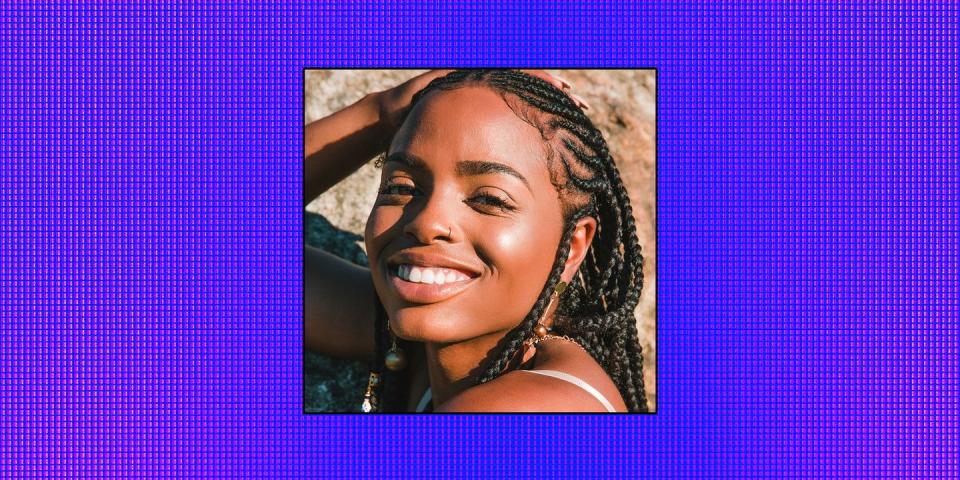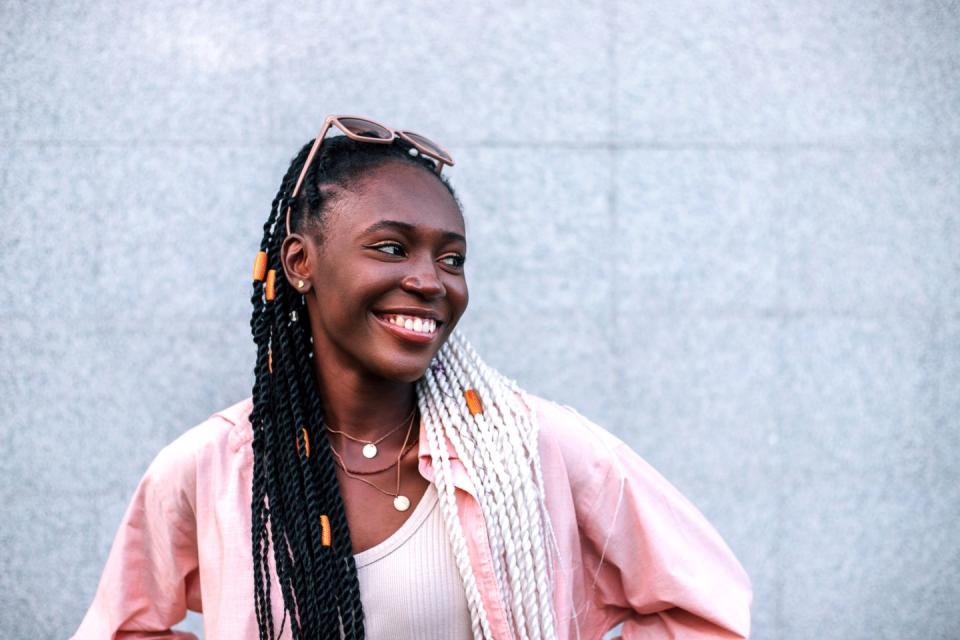Keeks Reid
·6-min read
So, you have made the decision to get braids! Hoorah. What an excellent choice. I love having braids and miss them with my entire heart whenever I'm without the style.
Honestly, getting braids installed will not only make you feel fly AF, but it also frees up a lot of time in the morning, allowing for more sweet, sweet time in your bed. The best thing is that they require very little maintenance for 4-6 weeks (great for lazies like myself), but there are a few things to consider and remember before you have them installed (especially if it’s your first time) to ensure they stay looking on point.
1. Know what you want and what you can have
You want braids - ok cool cool, but what braids? Box braids, Marley twists, Senegalese twists, micro braids, cornrows… there are dozens of options and it’s important you nail down the style you want so you can buy the right texture synthetic hair and find the right braider for the style. You can see our guide to the different kinds here. Gemma Moodie, natural hair specialist at Hype Coiffure Battersea, advises to talk to your braider about what would suit your hair before you start, “consult with your stylist about whether braids with synthetic extensions are suitable for your hair. Discussing prior chemical services about the condition of your hair is a great start. Then think about what size and length of braids are best for you. If the braids are too big and long, they may create damage and breakage along your hairline, due to the tension and weight of them.”
2. Set aside a day
Like any work of art, braiding takes time, so don’t be surprised if you have to set aside a large chunk of your day for your new style. “It takes between 4-6 hours for short to medium hair and 6-10 hours for really long braids depending on what braids you are having done how small how long they are,” says hairstylist Lorraine Dublin.
3. Prep is key
If your braider has insisted on you buying your hair Lorraine advises that you buy 4 -6 bags of braiding hair, depending on how long your braids are going to be. Your hair is going to be tucked away for a couple of months so you want to make sure it’s in the best condition going into the style. Wash it, condition it and deep condition the day before to make sure your hair is clean and nourished before styling, The Dizziak Deep Conditioner, is great for injecting moisture. Also, if you tend to co-wash your hair normally, this is a time you might want to switch back to a more clarifying shampoo to get rid of any build up on the lengths of your hair. The OUAI Detox Shampoo gets rid of build-up but doesn’t include any SLS and uses apple cider vinegar to cut through grime.
4. Stretch it
As well as detangling your hair thoroughly, you’ll also need to stretch your curls to ensure that your braids are super smooth and frizz-free on installation. If you don’t mind using heat on your hair then you should blow-dry in sections with a paddle brush to stretch it out (make sure you’re using the best heat protector too). If you prefer to not use heat, that’s fine, you can stretch the hair by moisturising and then doing a simple braid out or dividing the hair into buns post-wash and allowing to air-dry fully.
5. Hair is protected but shouldn’t be neglected
Braids are a great protective hairdo as you don’t have to style your hair every day, but it won’t be healthy unless you nourish it. “Once your braids are installed, it's important to keep your natural hair moisturised and lubricated. Synthetic hair often dehydrates natural hair. I’d recommend using a water-based hydrating spray from root-to-ends, then use a light oil on your scalp as needed,” advises Gemma.
6. Give it a few days
When you first have your braids installed, your head will feel alien to you for at least a week due to the weight of the braids and the fact that your scalp can now feel the direction of the wind - it’s just a fact. You will feel like you have to move your entire body to speak to someone, not just your neck. This feeling will past and as the braids begin to loosen up slightly, you’ll be able to style them, flip them and whip them back and forth as much as you want. But your braids shouldn’t EVER hurt when they are being put in, sure it can feel tender, but if they feel too tight tell your braider, this is important as it can damage your hair and scalp health.
7. Make it last
To make your braids last sleep with a XL bonnet or a silk headscarf so everything is kept in place. Fold your scarf into a triangle shape and wrap around your braids. You can bunch your braids into a loose low pony or let them hang free in the scarf. Or if you’re not about the headscarf life a satin pillowcase is a decent alternative. This clever one is only silk on one side making it more affordable and stopping it from sliding off the bed!
8. Wash with care
It’s a myth that you don’t need to or shouldn’t wash your hair when it’s braided. You definitely should as product build up, dead skin cells and general dirt from life can mount up in the plait. Grim. You just can’t wash it as you normally would as a) Vigorous washing can cause frizz and b) You won’t be able to get all the product out of your braids which can cause breakage. To help with scalp sweat and itching use a refreshing mist to calm and neutralise mustiness between washes. You can’t use heat on synthetic hair so just be patient and allow it to air-dry.
9. Give your hair a break
As much wearing braids is a great protective style, it’s really important to have a break between braided styles. Personally, I normally do 6 weeks on and never re-install braids when the next month after to ensure I’m giving my hair time to breathe.
You Might Also Like


